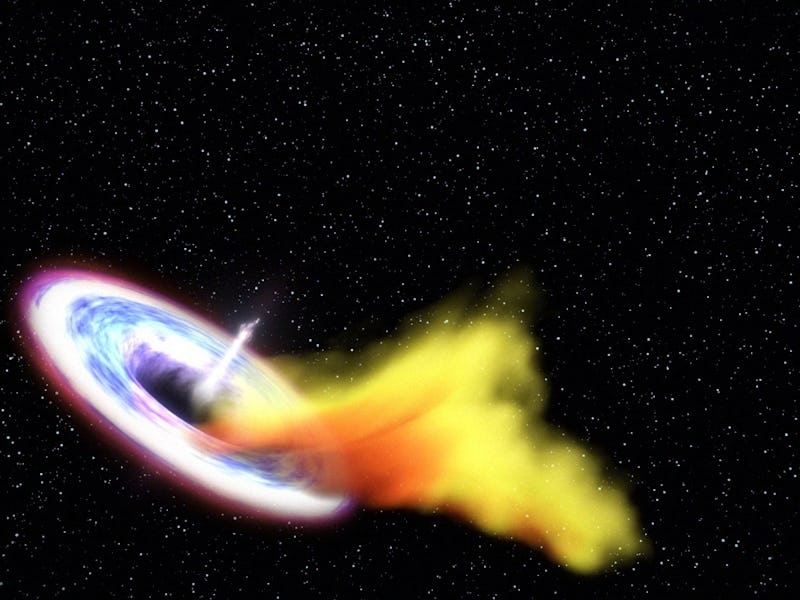Scientists Discover a Black Hole Eating a Star — Then Barfing Some of It Back Out
This is what interstellar indigestion looks like.

Back in August, Stephen Hawking suggested there was a way to actually escape from the gravitational pull of a black hole. And it seems the universe just showed us another way you might be able to dodge the clutches of death by spacetime anomaly: Simply wait for the black hole to spit you back out.
Radio astronomers just discovered a supermassive black hole — of which we have only observed about 20 of them — over 300 million light-years away, swallowing a star at the center of a nearby galaxy (yes, 300 million light-years is actually a short distance!). And better yet, the blackhole was spewing a chunk of hot flare — former remnants of the star — back out into the darkness of space.
Gnarly, ain’t it?
A supermassive black hole swallowing a star and ripping it apart like a piece of meat is an extremely rare event.
Even rarer is the chance for humans to observe this. Though this has been observed a few times before, scientists have never picked up this kind of radio signal of stellar matter jetting out from a black hole at this large of a magnitude. The findings have helped confirm previous theories about the way black holes feed on matter.
“We’ve shown that it was just a question of looking at the right time and with enough sensitivity,” James Miller-Jones, a scientist at the International Center for Radio Astronomy Research and a co-author of the study, said in a statement.
An artist’s impression of a star being drawn toward a black hole and destroyed, triggering a jet of plasma made from debris left over from the stars destruction
The scientists think the energy produced by these jets amount to about the entire energy output by the sun over 10 million years.
The former star was actually a lot like our sun. Supermassive black holes are thought to exist at the center of most galaxies, and that includes the Milky Way. It’s virtually impossible something like this would ever happen to our own sun, but lots of things can change in the next several billion years, so never say never…